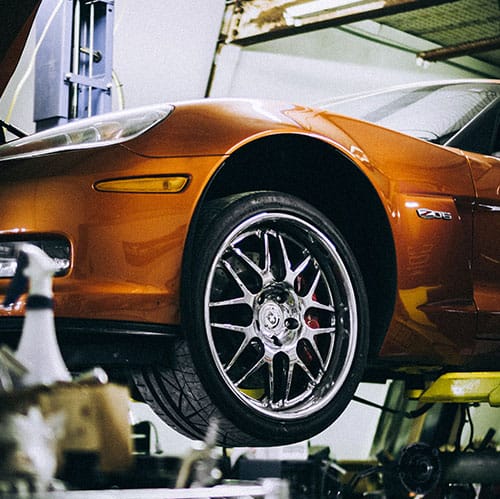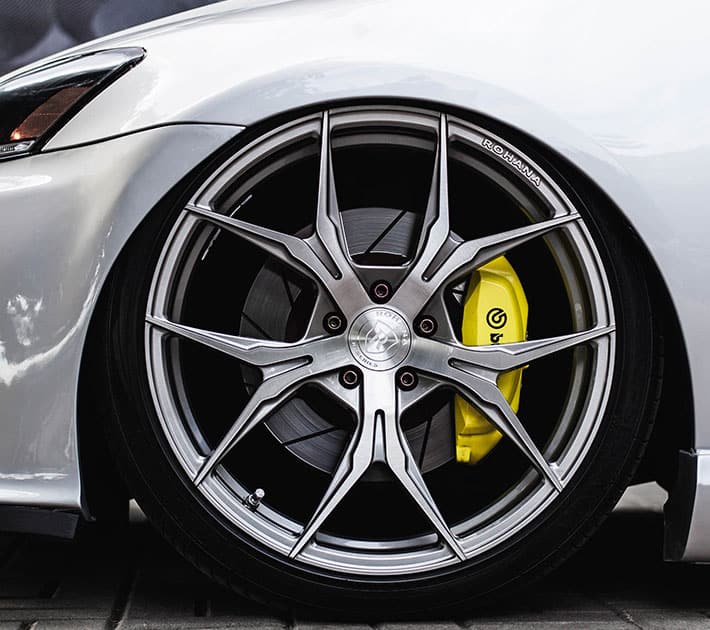Brake Rotors/Discs Replacement Service at
Your Home or Office
Average Cost Of Labour for Brake Rotors/Discs Replacement Service
Labour is calculated by Multiplying the length of time it will take to do the repairs by the Hourly Rate

Brake Rotors/Discs Replacement Service, Cost, and Part Information
This smooth metal disc comes attached to the wheel hub. While the rear wheels of older cars may not have rotors but drums, there are usually four rotors, one for each wheel, in most modern cars. The brake rotors slow down your car by creating friction with the brake pads when you apply the pedals.
As occurs with many other components, brake rotors can become warped and thin as they wear out over time. This results in poor heat dissipation and reduced braking efficiency as brake fluid will boil continuously.
Note:
Brake rotors are not typically not replaced singly. So if the front wheel has a rotor problem, the replacement will be done for both front wheels, and the same applies for rear wheel rotor replacement. Brake pads are also replaced during this service if the pads were not changed recently.

Replacing The Brake Rotors/Discs: How It’s Done
-
Determine brake rotor thickness
-
Remove worn brake rotors and pads and replace with new ones/p>
-
Carry out brake safety inspection
-
Test drive car to ensure optimal operation of the braking system

Why Is Brake Rotors/Discs Service Important For Your Car?
As with other components of the braking system, brake rotors have to be in good condition for safe and hassle-free driving. Besides, prompt servicing of car parts also go a long way in preventing more extensive repairs.
Consider replacing the brake rotors/discs in your car when:
– Vibration occurs in the braking system when applying the brakes
– The rotor surface has blue discoloration
– Rotors develop hot spots or grooves
Recommendation:
A best practice would be to determine the thickness of your car’s brake annually. The thickness should also be determined when replacing the brake pads. Brake pads often last longer than brake pads, so you want to consider replacing the rotors at alternate brake maintenance schedules.

How it Works

Get A Quote

Book an Appointment

Get Your Car Fixed
Google Reviews
Our Mechanics Are Available In Over 20 Locations
We’re available across the Greater Toronto Area, and are expanding quickly.
Cities We Serve
- Brake Rotors/Discs Replacement in Downtown Toronto, ON
- Brake Rotors/Discs Replacement in North York, ON
- Brake Rotors/Discs Replacement in Mississauga, ON
- Brake Rotors/Discs Replacement in Richmond Hill, ON
- Brake Rotors/Discs Replacement in Ajax, ON
- Brake Rotors/Discs Replacement in Pickering, ON
- Brake Rotors/Discs Replacement in Markham, ON
- Brake Rotors/Discs Replacement in Scarborough, ON
- Brake Rotors/Discs Replacement in Etobicoke, ON
- Brake Rotors/Discs Replacement in Brampton, ON
More Specific Brake Rotors/Discs Replacement Estimates
- Mercedes-Benz Brake Rotors/Discs Replacement
- BMW Brake Rotors/Discs Replacement
- Acura Brake Rotors/Discs Replacement
- Nissan Brake Rotors/Discs Replacement
- Ford Brake Rotors/Discs Replacement
- Mazda Brake Rotors/Discs Replacement
- Hyundai Brake Rotors/Discs Replacement
- Honda Brake Rotors/Discs Replacement
- Toyota Brake Rotors/Discs Replacement
- Volkswagen Brake Rotors/Discs Replacement













